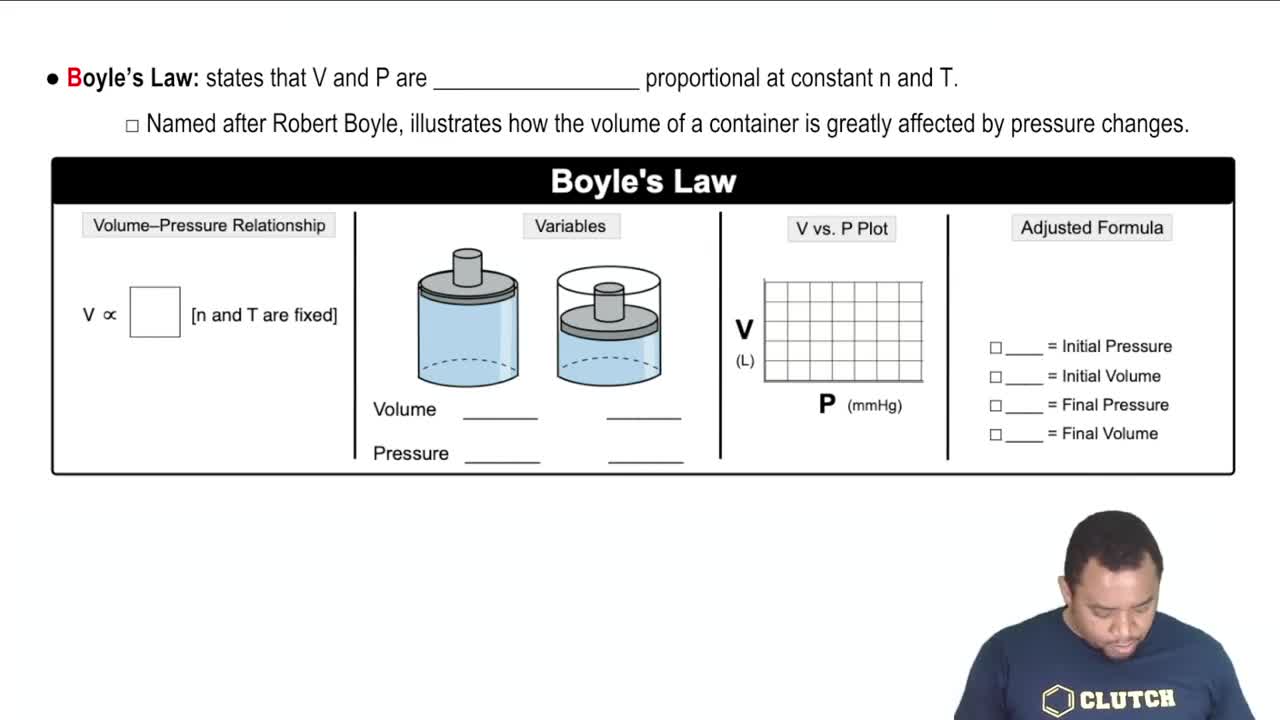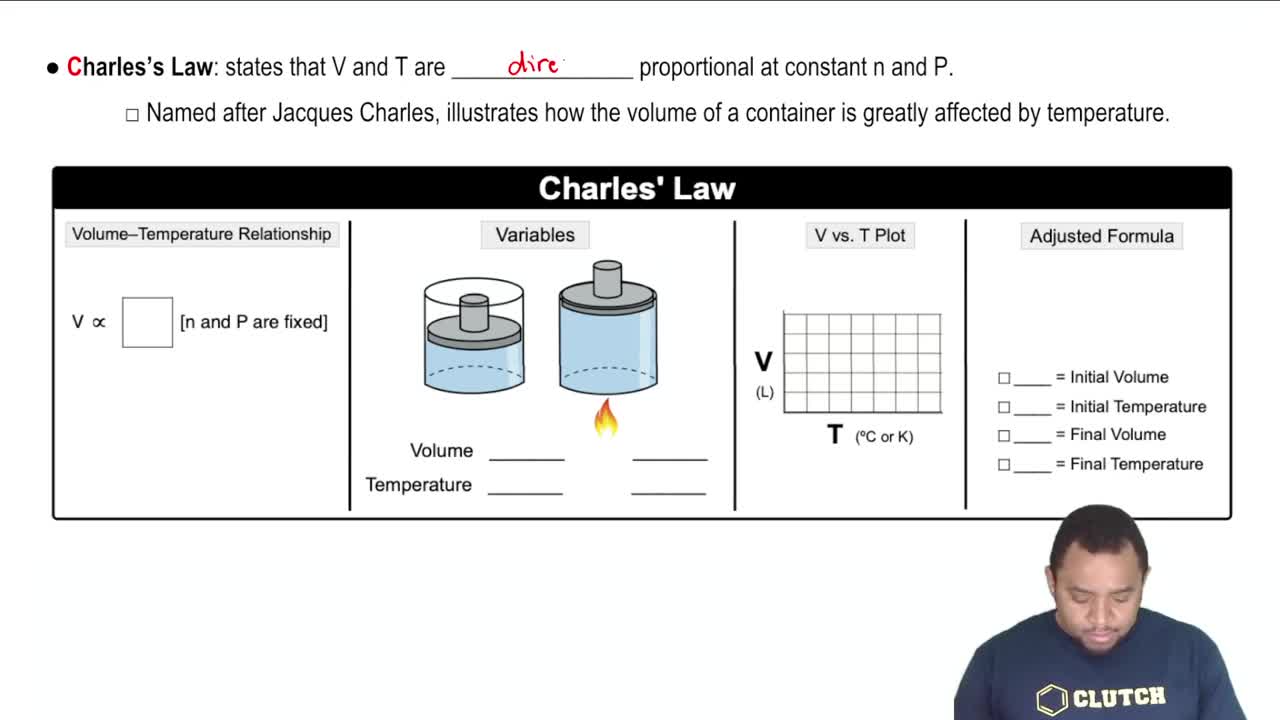Here are the essential concepts you must grasp in order to answer the question correctly.
Ideal Gas Law
The Ideal Gas Law relates the pressure, volume, temperature, and number of moles of a gas through the equation PV = nRT. This law is essential for understanding how gases behave under varying conditions. In this question, it helps determine the new volume of oxygen gas when the pressure changes while keeping the temperature constant.
Recommended video:
Boyle's Law
Boyle's Law states that the pressure of a gas is inversely proportional to its volume when temperature and the number of moles are held constant (P1V1 = P2V2). This principle is crucial for solving the first part of the question, where the volume of gas at a lower pressure is calculated while maintaining a constant temperature.
Recommended video:
Charles's Law
Charles's Law states that the volume of a gas is directly proportional to its temperature (in Kelvin) when pressure is held constant (V1/T1 = V2/T2). This law is relevant for the second part of the question, where the volume change of the gas is analyzed due to an increase in temperature at constant pressure.
Recommended video:
 Verified step by step guidance
Verified step by step guidance

